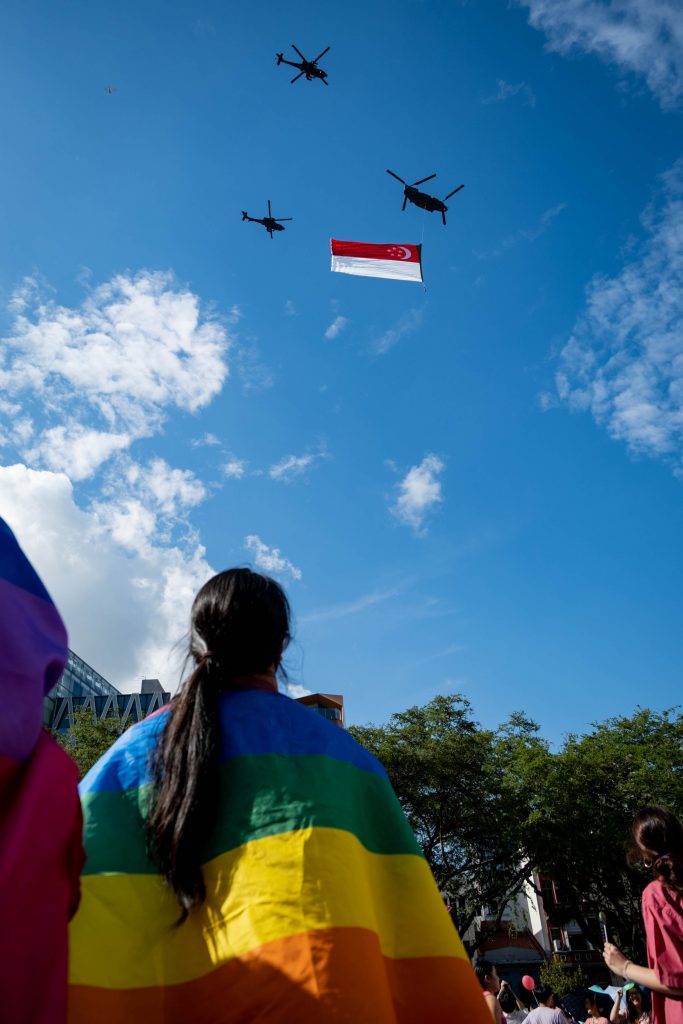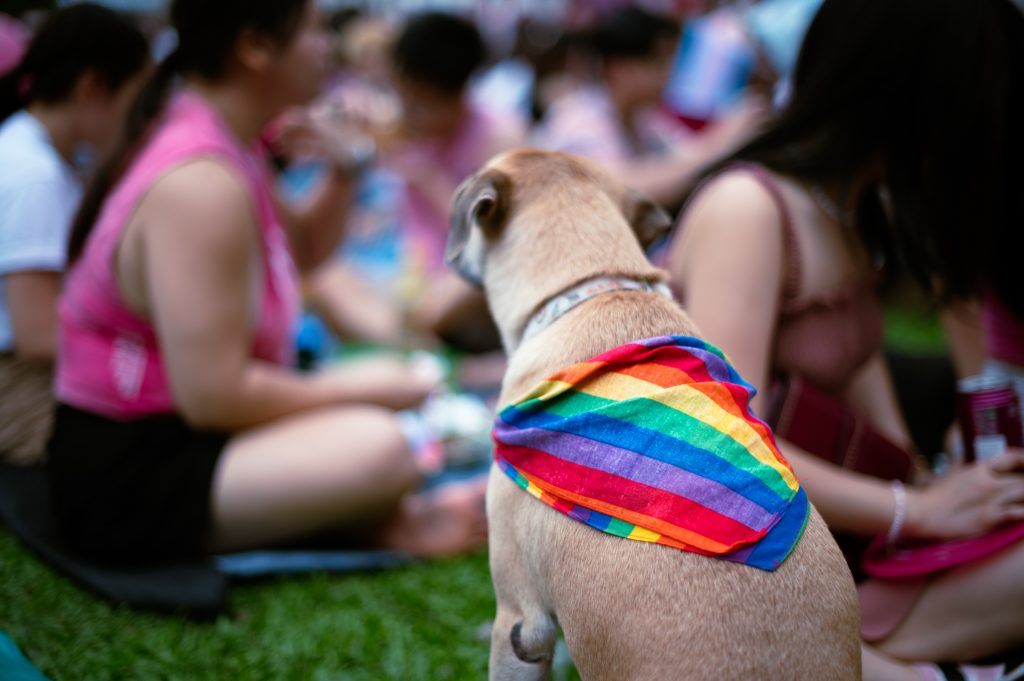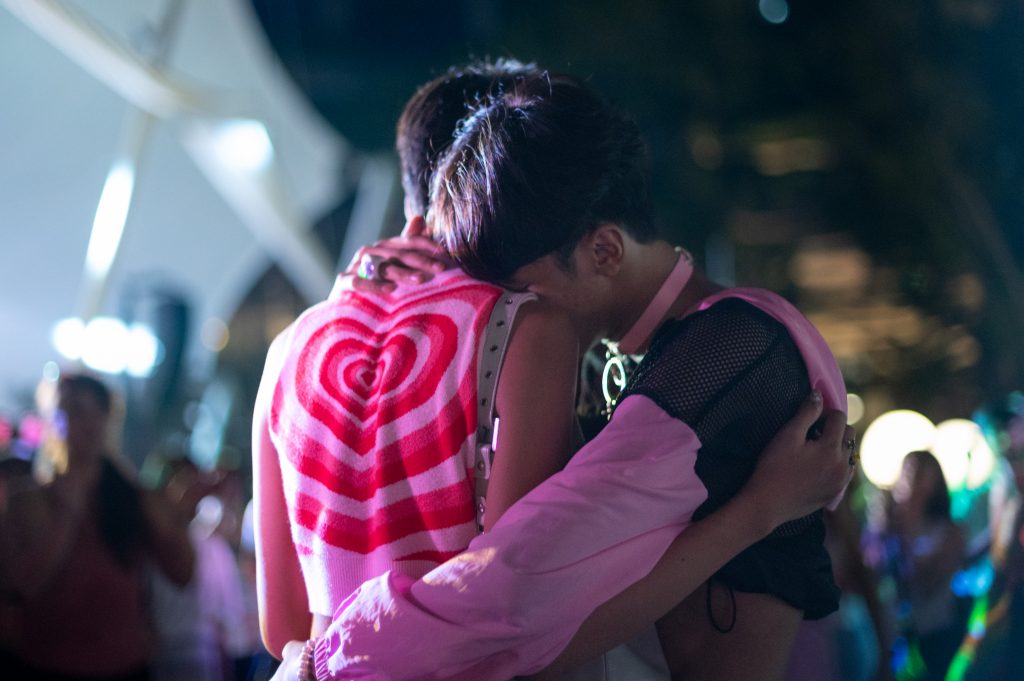Top image: Benjamin Tan / RICE File Photo
Singapore isn’t as openly homophobic as it used to be. But the touchiness over queer art in public spaces—and our officials’ aversion to the topic—shows we still have some ways to go before we can truly say “Singapore accepts the LGBTQ+ community”.
The clashes between TODAY and the National Arts Council (NAC) over what the latter’s CEO did or didn’t say about LGBTQ+ art, as well as the flagging of a queer (but otherwise inoffensive) song in a public music festival’s setlist are some of the more recent evidence.
More of us—especially millennials and Gen Zers—accept queer people. Outright homophobia is frowned upon, cancellable even. Yet most of our political leaders (across both aisles) have intentionally avoided explicit support of the LGBTQ+ community.
In 2019, Workers’ Party leader Pritam Singh rejected the labelling of his party’s MPs as anti-gay or pro-gay, saying: “We will seek to find common ground if there is common ground. If not, we will have to give each other the space to express our own deeply held beliefs and values, without prejudice and without prejudicing another’s right to express their views”.
Even after 377A’s repeal in 2022, the disinclination towards normalising LGBTQ+ acceptance remains clear. Celebrations were short-lived when the government announced an intended amendment to the constitution: To protect “family values”, Article 156 of the Constitution gave Parliament the power to define marriage as one between a man and a woman.
As a society, we seem betwixt and between—an ambiguous state of affairs where we preach respect for all and diversity but still uphold traditional (read: heteronormative) family values. But from recent affairs, we’re reminded yet again where the authorities stand on the issue.

Still Taboo
We need to look no further than certain recent events to see that many of us—too many, I’d say—are still deeply uncomfortable with the mere mention of LGBTQ+ issues.
Take the kerfuffle that ensued when a TODAY journalist approached National Arts Council (NAC) CEO Low Eng Teong on the sidelines of an arts event at Gillman Barracks.
Low had graced the event, organised by Nanyang Technological University Centre for Contemporary Art (NTU CCA), as a guest of honour. One of the performances at the event happened to be ‘Queer-tai’, a queer spin on traditional getai shows.
The journalist asked Low expressly about queer-themed art in public spaces. Through what was gathered from the interview transcript, the CEO hemmed and hawed for a bit before offering the opinion that “artists explore all types of topics and themes and issues in their work” and “want to make work that speaks to our times”.
TODAY went on to publish an article on September 30th with the headline: ‘LGBTQ-themed arts performances in public spaces in line with the times: National Arts Council Chief’.
In response, NAC released two (!) clarifications calling TODAY’s report misleading, making it clear that Low “did not refer to LGBTQ issues at all”. The headline was then tweaked to reflect that the sentiment comes from the ‘arts community’ instead of the NAC chief.
Without getting into who’s wrong or right, what stood out from the exchange was Low’s palpable discomfort at being asked about queer art. Why didn’t he deem it fit to refer to LGBTQ+ issues in his reply when the journalist was clearly asking about it?
Besides showcasing just how touchy the topic of LGBTQ+ rights still is in Singapore, the whole saga had another unintended impact: the Streisand Effect. ‘Queer-tai’ came under scrutiny, and NTU later declared that the performance should not have been held in public in the first place due to “the sensitivities associated”.

When Queer Love Is Deemed ‘Mature Content’
The dust had barely settled on the whole NAC vs TODAY kerfuffle when more contentious news surfaced. According to an Instagram Story by local singer-songwriter Raine Chiew, she alleged that her song ‘Melt’ had been flagged and removed from her set by the Infocomm Media Development Authority (IMDA) for the District M music festival. The song apparently “exceeds the General rating” as it “alludes to same-sex attraction”.
The same thing happened to other artists in the lineup (Marian Carmel, Rene Ann Wong, Lewloh) even though none of the songs contained sexual innuendos, vulgarities, or violence, Raine wrote.
When RICE reached out to IMDA, however, it denied removing any songs from District M’s setlist. The event, held on October 6th and 7th, was given an Advisory rating—not a General rating—and the organiser was required to display the rating and consumer advice “Some Mature Content” at the event venue, it added. It did not confirm if the songs alluding to same-sex attraction were the only reason for the festival’s rating.
But to be clear, under IMDA regulations, any content that even mentions “alternative sexualities” is enough to bump an arts event from a General rating (suitable for all) to an Advisory rating (includes some mature content, and requires event organisers to display notices stating as such at the event).
Beyond that, there’s also Advisory16 (suited for persons aged 16 and above) and R18 (restricted to those 18 and above, like Sam Smith’s upcoming concert). Besides evaluating content on violence, nudity, sexual content, and language, IMDA also considers social norms.
As it says on IMDA’s website: “The portrayal of non-mainstream lifestyles and behaviours should typically be accompanied by at least consumer advice. This includes, but is not limited to, alternative sexualities, fetishes and addictions.”
But that means that queer art, even if inoffensive, such as ‘Melt’, is somehow equivalent to “mature content”.
It doesn’t add up, at least to me. Take the lyrics of ‘Melt’ for example:
You’re here
But so out of reach
If I were a man
Would that change the way you feel
Taking the lyrics at face value, it’s hard to see what makes the song unsuitable for general public consumption. If an artist of a different gender sang the song, or if the word ‘man’ had been omitted, would it have been deemed suitable for a general audience? It’s not a stretch to imagine that it probably wouldn’t be an issue.
I get it. The regulations are in place because there should be safeguards for content staged at public events. But are our existing regulations too heavy-handed? After all, if we’re going by the book, artists can’t sing about queer love without having an advisory tacked onto their content.

Even though queer depiction and art aren’t outrightly banned in Singapore, IMDA’s regulations effectively limit who gets to consume it. The result: Less representation and normalisation of LGBTQ people among the local masses. Not that the limits do much—queer art and queer content are as accessible as ever online to young Singaporeans.
And with invisible OB markers seeming to prohibit any explicit advocacy of LGBTQ+ rights in Singapore, it’s all too understandable that queer artists may be hesitant to make waves.
Raine, as well as the other artists listed in her post, did not respond to RICE’s requests for comment on the matter. One artist declined to comment, citing a reluctance to rock the boat with IMDA.
It’s easy to say we respect all or that LGBTQ+ people are welcome in Singapore. “We do not harass them or discriminate against them,” said PM Lee in 2015.
But the fact is that queer people here aren’t afforded the same respect and space in public as straight people to tell their stories. We still treat queer art as mature content by virtue of its queerness.
This has come up before, and it makes headlines every time. Take the Disney-Pixar animated children’s movie Lightyear, for example. Its depiction of two women starting a family and sharing a kiss netted it an NC16 rating, sparking controversy.
The coming-of-age film Love, Simon, in which a teenager comes to terms with his sexuality, was rated R21 for homosexual themes. Meanwhile, The Shape of Water (where a woman hooks up with a fish-man), was rated M18. Having seen both films, I think it should be noted that The Shape of Water was far more graphic and sexual.
Is inter-species love less of a threat to social norms than queer love? At least, that’s what our rating system seems to imply. The fact that negative portrayals of LGBTQ+ people are allowed (while positive portrayals are regulated) is all the more disturbing.
With the growing acceptance of LGBTQ+ people, it’s only right to allow greater room for queer artists’ stories to be told publicly and in our media.
Maybe the NAC chief is right: Artists will want to make work that speaks to our times. Our regulations should catch up.






